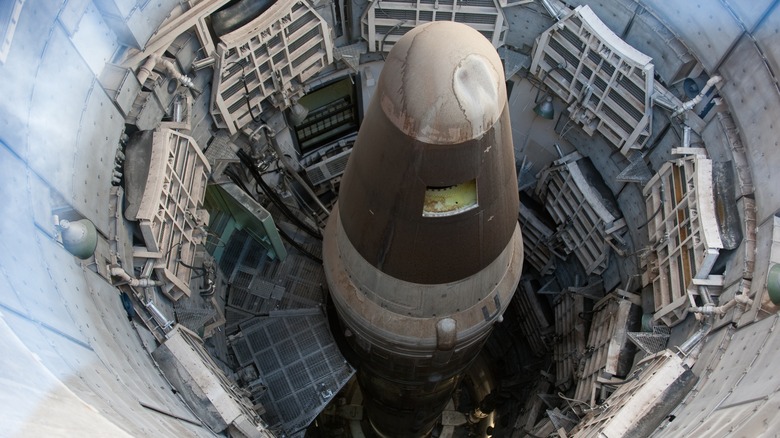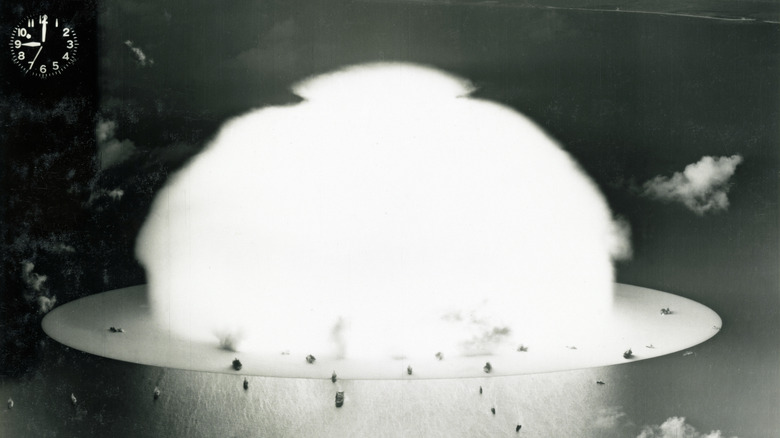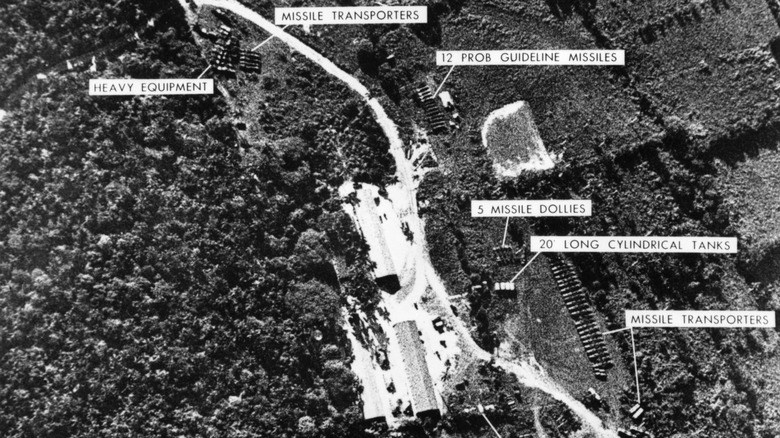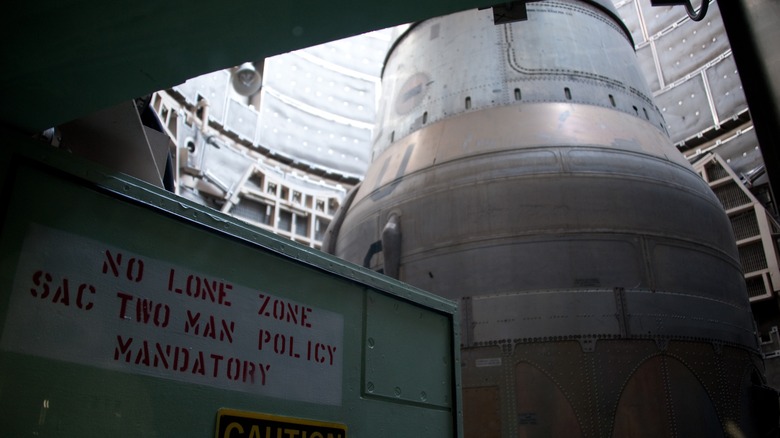Here's How Many Nuclear Weapons The United States Owns
In the decades since the United States dropped atomic bombs on Hiroshima and Nagasaki, the country has stockpiled thousands more. Most of these weapons are orders of magnitude more powerful than the bombs dropped on the two Japanese cities, as Popular Mechanics notes. Meanwhile, it's not just the U.S. that has stockpiled nukes: according to World Population Review, Russia also has a nuclear arsenal (dating back to the Soviet Union days), as do a few other countries. Meanwhile, states such as Iran and North Korea continue to attempt to develop their own nuclear weapons, despite an international agreement that these two nations shouldn't possess nukes.
In the 1970s, according to Arms Control Association, the U.S. and the Soviets signed arms-control treaties that would lead to both nations reducing the size of their nuclear stockpiles. However, the U.S. still retains hundreds of deployment-ready nukes, and several thousand more are inactive but available.
Nuclear proliferation
After the U.S. used nuclear weapons in war for the first, second, and (so far) only times in history, the atomic arms race was on. As USA Today reported, the feds partially outsourced the country's nuclear weapons program to private companies, many of which paid little to no attention to safety protocols, possibly sickening hundreds if not thousands of workers.
Meanwhile, the Soviets had taken an interest, and by 1949, according to Arms Control Association, the USSR had conducted its own nuclear weapons test.
What would follow would be two decades of unbridled nuclear proliferation, as it's called in academic circles, as the U.S. and the Soviets continued building and stockpiling bigger and more powerful weapons, and other nations started getting in on the action. By the 1970s, according to Arms Control Association, between the Americans and the Soviets alone there were possibly as many as 80,000 nuclear warheads stockpiled, not to mention other countries that had developed such weapons (none on the scale achieved by the Americans and the Soviets).
Nuclear brinksmanship
With the advancement of nuclear proliferation came another term that described the race for atomic weapons in those days: nuclear brinksmanship. Basically, the term means that two nations with nuclear weapons — specifically the U.S. and the USSR — build up so many nukes that each nation's destruction is assured should things go haywire, as Cambridge University explains it. Effectively, the U.S. and the Soviets were, for the better part of a few decades, constantly on the brink of nuclear war, and any number of things going wrong could have literally meant the end of the world. A trigger-happy commander in Washington or Moscow, for example, could have set into motion a series of events that would culminate in full-scale nuclear war.
How close were the Americans and the Soviets to a nuclear conflict? Probably closer than anyone would like to admit. There was the Cuban Missile Crisis of 1962, for example. As Britannica explains, the Soviets provided nuclear missiles to its ally Cuba, putting them within about 100 miles or so of the mainland U.S. That wouldn't do, said the Kennedy administration, and for a few weeks it looked like the U.S. and the Soviets might actually go to war, before cooler heads prevailed.
By the 1970s, it was obvious that things were getting out of hand, and the two countries began invoking treaties that would drastically reduce both nations' nuclear stockpiles.
The U.S. still has several thousand nukes
It's been 50 years since the first nuclear-reduction treaties between the U.S. and the Soviets were signed, and two things have happened since then. First, the Soviet Union ceased to exist (although those Soviet nukes just changed hands and became the property of the Russians); and second, the U.S. has largely abided by those treaties and significantly reduced its nuclear stockpile.
As World Population Review reports, as of 2022 the U.S. has 5,550 nuclear weapons. Of those, 1,389 are considered active, another 2,361 available, and 1,800 are considered retired. The Center for Arms Control and Non-Proliferation gives a slightly different evaluation of those numbers, claiming that 3,800 such weapons are active, the remaining 1,750 awaiting dismantlement. A 2010 treaty, the New Strategic Arms Reduction Treaty (NEW START), extended in 2021 for an additional five years (per Arms Control Association), limits both the U.S. and Russia to 1,550 strategic deployed warheads.



